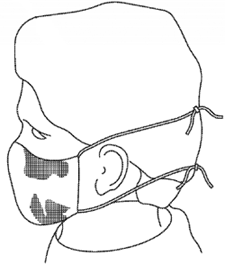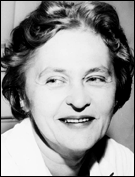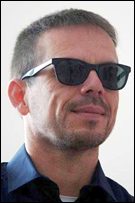 The Phase Change Matters e-mail newsletter is a weekly summary of the latest news and research on phase change materials and thermal energy storage. To subscribe, visit www.puretemp.com/subscribe. For more frequent updates, follow @puretemp on Twitter or visit the Phase Change Matters blog, www.puretemp.com/pcmatters.
The Phase Change Matters e-mail newsletter is a weekly summary of the latest news and research on phase change materials and thermal energy storage. To subscribe, visit www.puretemp.com/subscribe. For more frequent updates, follow @puretemp on Twitter or visit the Phase Change Matters blog, www.puretemp.com/pcmatters.
NEW PRODUCTS
Microtek introduces new PCM built with nextek encapsulation technology
Microtek Laboratories of Dayton, Ohio, has developed a new microencapsulated phase change material designed for use in bedding, building materials and consumer textiles.
The biobased PCM, vivtek 29, is offered in wet cake form. It has a melting point of 31º Celsius and a thermal storage capacity of 170 joules per gram. The mean particle size is 14-24 microns.
 Microtek says the new product, built using the company’s patented nextek encapsulation technology, “combines robustness, high thermal stability and easy dispersibility” in an aqueous solution and is “less flammable than traditional PCMs.” The company quietly introduced vivtek in July 2018.
Microtek says the new product, built using the company’s patented nextek encapsulation technology, “combines robustness, high thermal stability and easy dispersibility” in an aqueous solution and is “less flammable than traditional PCMs.” The company quietly introduced vivtek in July 2018.
Microtek President Tim Riazzi says the company has “several projects in the development phase” that use the nextek encapsulation technology.
“Interest in consumer applications [for vivtek] is very good,” Riazzi said. “As with general consumer desires, more and more of our partners are looking and asking for sustainable and bio-based options to add to their product lines.”
PATENTS
Face mask having improved comfort through cooling of microclimate
U.S. patent application 20190069611 (applicant Avent Inc., Alpharetta, Georgia):
 “A multi-layered face mask coated with discontinuous patterns of phase change material are incorporated into the face mask construction to provide for cooling of the microclimate in the dead space of the face mask. Optimized cooling is achieved by strategic placement of layers coated with a phase change material within the mask construction and the amount and density of the phase change material in contact with the temperature sensitive areas of the face, as well as areas experiencing the maximum amount of flux from exhaled breath. The shape of the mask can also be adjusted to increase skin contact with the phase change material and decrease dead space volume, which reduces the volume of warm exhaled air and can provide sufficient cooling with less phase change material.”
“A multi-layered face mask coated with discontinuous patterns of phase change material are incorporated into the face mask construction to provide for cooling of the microclimate in the dead space of the face mask. Optimized cooling is achieved by strategic placement of layers coated with a phase change material within the mask construction and the amount and density of the phase change material in contact with the temperature sensitive areas of the face, as well as areas experiencing the maximum amount of flux from exhaled breath. The shape of the mask can also be adjusted to increase skin contact with the phase change material and decrease dead space volume, which reduces the volume of warm exhaled air and can provide sufficient cooling with less phase change material.”
PCM reservoir equipped with filling tube for a motor vehicle heat exchanger
U.S. patent application 20190072304 (applicant Valeo Systemes Thermiques, Le Mesnil St. Denis, France):
“The invention relates to a phase-change material reservoir for a heat exchanger of an air-conditioning installation of a vehicle, the reservoir being arranged between two reservoir plates and having filling means, characterized in that the filling means include at least one tube delimiting a filling channel arranged outside the reservoir against a first plate of the reservoir.”
Method for producing a latent heat accumulator
U.S. patent application 20190071594 (applicants Schunk Carbon Technology GmbH, Bad Goisem, Austria; and Schunk Kohlenstofftechnik GmbH, Heuchelheim, Germany):
“A method for producing a latent heat accumulator, wherein a phase change material is introduced into a molded body produced by expanding a graphitic starting material, comprising the steps of: introducing the graphitic starting material into a mold, closing the mold, expanding the graphitic starting material by introducing heat, wherein the mold is heated before or after the graphitic starting material is introduced, or the energy required for expansion is introduced directly into the graphitic starting material, and after the molded body has been formed, introducing the phase change material.”
IN BRIEF
• The Greater Boston Food Bank is reporting a 75 percent reduction in energy use during targeted peak hours since the beginning of the year after installing a Viking Cold Solutions thermal energy storage system for the refrigeration units at its 117,000 square-foot, high-efficiency Yawkey Distribution Center.
 • To mark Women’s History Month, 24/7 Wall St. has compiled a list of “50 Things You Never Knew Were Invented by Women.” MIT researcher Maria Telkes, a pioneer in the field of solar thermal storage, is on the list at No. 30. She created the first solar-heated system for her home in Dover, Mass., in 1947. The system used a phase change material, sodium sulfate decahydrate, to store solar heat.
• To mark Women’s History Month, 24/7 Wall St. has compiled a list of “50 Things You Never Knew Were Invented by Women.” MIT researcher Maria Telkes, a pioneer in the field of solar thermal storage, is on the list at No. 30. She created the first solar-heated system for her home in Dover, Mass., in 1947. The system used a phase change material, sodium sulfate decahydrate, to store solar heat.
• Researchers at the Chinese Academy of Sciences say they have developed an inexpensive, flexible film that renders the objects it covers virtually invisible in infrared light. The film’s main components are DuPont‘s Kevlar, a synthetic fiber with high tensile strength, and polyethylene glycol, a phase change material that can store heat.
• French utility ENGIE has begun production at one of South Africa’s largest renewable energy projects, the 100MW Kathu Solar Park. The concentrated solar plant’s molten salt storage system provides up to 4.5 hours of thermal energy storage.
• The Southwest Research Institute is hosting a two-day workshop on microencapsulation March 25-26 in San Antonio, Texas. The introductory course will cover topics such as atomization (spray drying, spray chilling, spray congealing) and spray coating (fluid bed coating, granulation). The cost is $950.
• The University of California is winning praise for its decision to end its subscription deal with Elsevier, the world’s biggest publisher of scientific journals. UC is the first major university system to push for open-access publishing. UC, which had been paying $11 million a year to Elsevier in subscription fees, generates about 10 percent of the research produced in the United States. “It’s ridiculous that, in this age of the internet, researchers are paying huge fees for access to academic papers and for publication of their own work,” the San Jose Mercury News said in a March 6 editorial.
RESEARCH ROUNDUP
For our full list of recent academic research, see puretemp.com/academic. Here are highlights from the past week:
From Energies:• Analysis of Thermal Performance and Energy Saving Potential by PCM Radiant Floor Heating System based on Wet Construction Method and Hot Water
From Applied Energy:
• Supercooling of phase-change materials and the techniques used to mitigate the phenomenon
From Polymer Chemistry:
• Encapsulating an organic phase change material within emulsion-templated poly(urethane urea)s
From AIP Advances:
• Thermal expansion effects on the one-dimensional liquid-solid phase transition in high temperature phase change materials
From Journal of Materials Chemistry A:
• A thermal energy storage composite with sensing function and its thermal conductivity and thermal effusivity enhancement
From Materials Science and Engineering:
• Experimental Measurements of Hot Water Stratification in a Heat Storage Tank
From Thermochimica Acta:
• Modification of physical and thermal characteristics of stearic acid as a phase change materials using TiO2-nanoparticles
From Energy and Buildings:
• Thermal and Structural Performance of Geopolymer Concrete Containing Phase Change Material Encapsulated in Expanded Clay
• An experimental study on applying organic PCMs to gypsum-cement board for improving thermal performance of buildings in different climates
From International Journal of Biological Macromolecules:
• Sodium alginate/feather keratin-g-allyloxy polyethylene glycol composite phase change fiber
From Construction and Building Materials:
• Thermal properties of lightweight concrete incorporating high contents of phase change materials
From Progress in Organic Coatings:
• Fabrication and characterization of microencapsulated n-heptadecane with graphene/starch composite shell for thermal energy storage
From Sustainable Energy and Fuels:
• A thermal energy storage prototype using sodium magnesium hydride
From Thermal Science and Engineering Progress:
• Experimental investigation of the thermal performance of a helical coil latent heat thermal energy storage for solar energy applications
From International Journal of Sports Physiology and Performance:
• Exploring the Efficacy of a Safe Cryotherapy Alternative: Physiological Temperature Changes from Cold Water Immersion vs Prolonged Phase Change Material Cooling
From Applied Sciences:
• A Form Stable Composite Phase Change Material for Thermal Energy Storage Applications over 700° C
NETWORKING
Connect with PCM experts and industry leaders on LinkedIn
 More than 1,400 people have joined a LinkedIn group devoted to the discussion of phase change material and thermal energy storage. The Phase Change Matters group is an interactive complement to the award-winning blog and newsletter of the same name.
More than 1,400 people have joined a LinkedIn group devoted to the discussion of phase change material and thermal energy storage. The Phase Change Matters group is an interactive complement to the award-winning blog and newsletter of the same name.
You are invited to join the group and connect with PCM and TES experts from around the world. This week we welcome Bas de Bekker, sales manager at Orange Climate BV, Breda area, Netherlands; Ashok Pauline, associate professor at Vasudevan College of Engineering and Technology, Chennai, India; and Peter Konowalczyk, mechanical design manager at Centrica, Horley, United Kingdom.
 Dr. Harald Mehling, left, an expert in thermal energy storage and a RAL Quality Association PCM consultant, posted a link to a sample of his new book, “Understanding the basics of energy: An introduction from simple to complex situations.” He writes:
Dr. Harald Mehling, left, an expert in thermal energy storage and a RAL Quality Association PCM consultant, posted a link to a sample of his new book, “Understanding the basics of energy: An introduction from simple to complex situations.” He writes:
“I work now for 25 years in energy R&D, mainly on heat storage and material properties, and started to work independent a few years ago. One thing that I wanted to do was to write books that explain energy related matters in a clear, well structured way, suitable for education. I just finished the book on energy basics. If you are interested, there is a large text sample on ResearchGate at https://lnkd.in/dPP2S6V.”